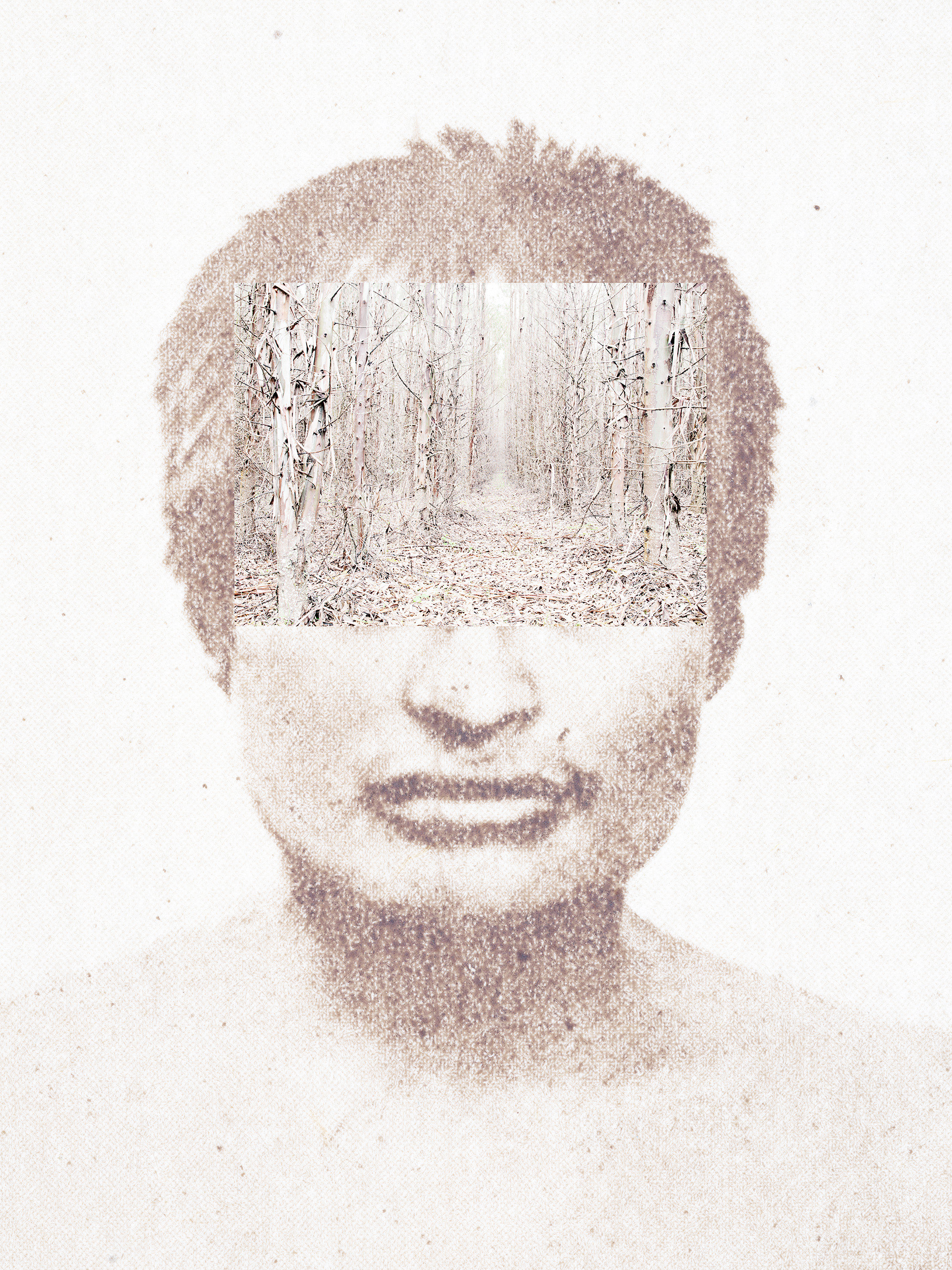v

Patrik Rastenberger: The Latitude of Sorrow
22.4.–22.5.2023
Patrik Rastenberger's series The Latitude of Sorrow started when he found Kaarlo Hilden's book "Prehistoric and Modern Human Races on Earth" on his family's bookshelf. The book is a racial educational book from the 1930's. It was in the scientific mainstream of its time, and its author was a professor of geography at the time of its publication. Browsing through the book gave Rastenberger an insight into how the difference between us and others was once created through the use of biased imagery and pseudoscience.
At the time of the book's discovery, Rastenberger was working with immigrants living in East Helsinki. While working, Rastenberger encountered the effects of the structural racism that lurks in Finnish society on a daily basis. Despite being members of the same Finnish society, we live in completely parallel worlds. Immigrants live in their own communities separate from the rest of the population, and we have failed to grasp the burden of colonial history that immigrants often carry with them when they arrive in Finland.
The structural racism embedded in European countries is the result of centuries of colonial policies and education. Structural racism refers to racism as a social problem, manifested for example in discrimination in education, employment or housing. It prevents certain groups of people from enjoying equal opportunities based on the colour of their skin - or on some other characteristic that makes them different from the majority of the (white) population. Structural racism hides behing seemingly neutral policies designed to maintain dominant power structures. These attitudes and suspicions are the result of a long process of taught changes in attitudes.
The Latitude of Sorrow is an attempt to understand how structural racism has been constructed as part of the history of Western civilisation in Finland, too. In his series of works, Rastenberger combines old ethnographic photographs from Hilden's book, his own images, and archival material from his family, using a variety of techniques. The Latitude of Sorrow is an exploration into the murky world of ethnographic photography and racist racial doctrines.
It shows how anthropology and ethnographic photography have been used in the 20th century to create a discriminatory world order as a tool of politics and governance. Combining old photographs with new ones, it allows us to create new narratives between history and the present, and to look at images from a new perspective.
The title of the series The Latitude of Sorrow refers to the book Tristes Tropiquesby Claude Levi-Strauss, published in the 1950s. According to the structuralist view represented in the book, our perception of the world gives us a picture of reality, but it is the culture we adopt that guides our interpretation of it. According to contemporary visual cultural studies, we actively create and shape the culture around us. Visual and linguistic representations shape the world and our perception of it in a constant interaction with each other.
By studying how our perception of the reality is created, we can hopefully also correct the errors in our worldview. The purpose of The Latitude of Sorrowis to identify misconceptions and, by unraveling the process, turn the focus back to how our image of reality is constructed.
As an author, I ask: can art be used to dismantle the myth of the monolingual and -cultural nation-state, to locate the historical roots of current structural racism and point the way towards a more pluralistic and diverse society?